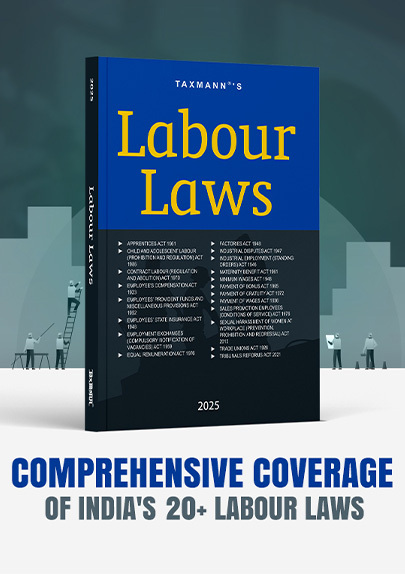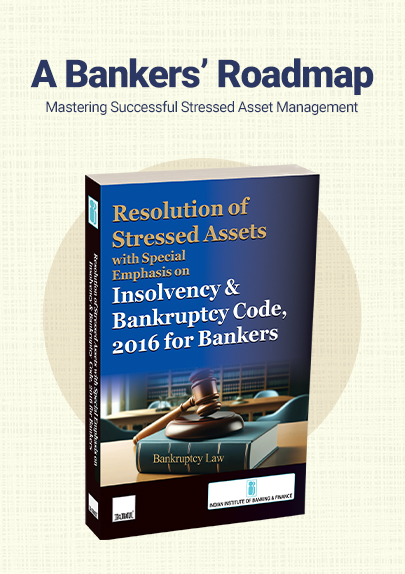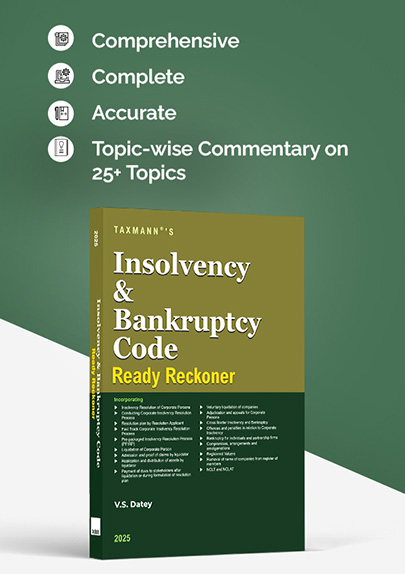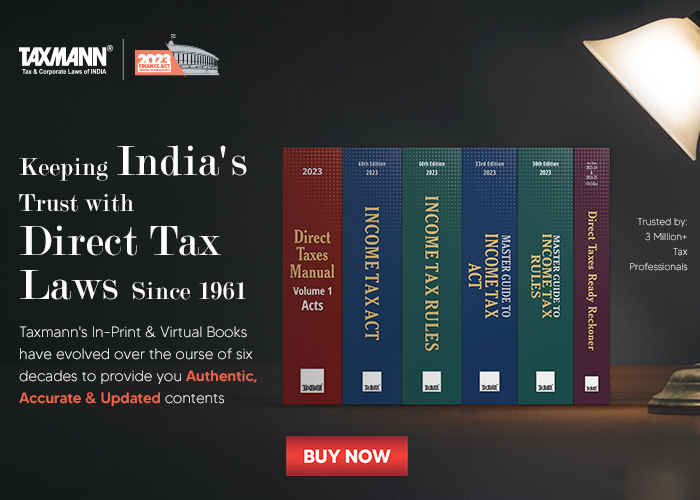Definition of Waqf – How the UMEED Act Redefines Waqf Creation
- Other Laws|Blog|
- 5 Min Read
- By Taxmann
- |
- Last Updated on 21 April, 2025
Waqf (also spelled Wakf) is a permanent dedication of any movable or immovable property by a Muslim for purposes recognized by Islamic law as religious, pious, or charitable. As defined under Section 3(r) of the Waqf Act, 1995, waqf includes not only the express dedication of property but also waqf by usage, community-owned properties declared as waqf, and even waqf created by non-Muslims if the purpose aligns with those acknowledged in Muslim law.
Table of Contents
- Introduction
- Old vs. New – The Shift in Definitions
- Who Is Eligible to Create a Waqf?
- End of “Waqf by User”
- Recognizing New Communities – Aghakhani and Bohra Waqfs
- Waqf-Alal-Aulad – Family Waqfs Revisited
- Mandatory Deed Execution
- Benefits and Concerns
- Moving Forward
- Conclusion
Check out Taxmann's Unified Waqf Management Empowerment Efficiency and Development Act 1995 (UMEED) with Rules – Bare Act with Section Notes which offers a comprehensive framework for Waqf administration. It consolidates key enactments—including the Mussalman Wakf (Repeal) Act 2025—and the latest rules (e.g., Waqf Properties Lease Rules 2014, Central Waqf Council Rules 1998). A hallmark Comparative Study (old vs. new) and detailed Section Notes clarify amendments and procedures, simplifying day-to-day compliance. Aimed at legal professionals, Waqf managers, academics, officers, and policy analysts, it emphasises digital compliance, practical insights, and user-friendly referencing.
1. Introduction
The essence of a waqf lies in the permanent dedication of one’s property to religious or charitable purposes recognized under Islamic law. Over the centuries, the concept has evolved, and modern Indian legislation around waqf has been through several amendments. Under the earlier Waqf Act, 1995, the term “waqf” was broad, leading to ambiguities such as “waqf by user.” The UMEED Act, 1995 (introduced via the Waqf (Amendment) Act, 2025) has made significant changes to who can create, how it’s created, and what types of waqfs are recognized.
This article dives into the redefinitions under the UMEED Act – from restricting waqf creation only to practicing Muslims, to adding new categories like Aghakhani and Bohra waqfs, and clarifying rules for family waqfs (waqf-alal-aulad).
2. Old vs. New – The Shift in Definitions
2.1 The Old Waqf Act (1995)
Under the 1995 Act, any person—whether Muslim or non-Muslim—could theoretically dedicate property for a waqf, provided it was intended for purposes recognized as religious or charitable in Islam. This allowed “waqf by user,” where long-standing use of a property for religious activities could be deemed a waqf, even absent a formal deed.
2.2 The UMEED Act (2025)
Under the new Section 3(r) (Definition of “waqf”) –
- A wakif must be a practicing Muslim for at least 5 years.
- The dedicated property must be owned by the wakif and competent to transfer.
- “Waqf by user” has been effectively de-recognized for new waqfs, though older such waqfs remain valid unless disputed or deemed government land.
- Creation of waqf without a written deed is no longer allowed.
This amendment seeks to prevent misuse, particularly allegations that non-Muslim or government property was arbitrarily claimed as waqf.
3. Who Is Eligible to Create a Waqf?
A striking departure from the Old Act is that only a Muslim who has been practicing Islam for at least five years can create a waqf. This is a strict legal threshold, presumably aimed at ensuring authenticity and preventing individuals from sporadically claiming a piece of land as a waqf.
- Section 3A explicitly forbids creating a waqf if the person is not the “lawful owner” of the property.
- Non-Muslims are no longer permitted to found waqfs, a departure from the more liberal stance earlier.
4. End of “Waqf by User”
4.1 Historical Context
This concept dates back to a time when religious usage could become so entrenched that the property was effectively recognized as a waqf. This occasionally led to encroachments where private or public property was, over time, dubbed “waqf.”
4.2 Impact of Abolition
Under the UMEED Act, waqf creation must be accompanied by a formal deed. Any user-based waqf created after the Act is invalid. This closes a loophole and simplifies property disputes. However, existing “waqf by user” properties remain valid unless they conflict with newly introduced Sections 3C and 3D (i.e., they belong to the government or were wrongly declared).
5. Recognizing New Communities – Aghakhani and Bohra Waqfs
Previously, statutory recognition was extended primarily to Sunni and Shia waqfs. Now, the definitions of “Aghakhani waqf” and “Bohra waqf” are included, reflecting the Indian Muslim community’s diversity –
- Aghakhani waqf – A waqf dedicated by a Muslim from the Aghakhani (Ismaili) community.
- Bohra waqf – A waqf dedicated by a Muslim from the Dawoodi Bohra sect.
This formal acknowledgment ensures their distinct doctrines and ritual practices can be preserved and governed under the law, preventing confusion on which Board or Tribunal has jurisdiction.
6. Waqf-Alal-Aulad – Family Waqfs Revisited
6.1 Previous Practice
Waqf-alal-aulad refers to a waqf created for the benefit of one’s family, typically to ensure financial security for descendants. Historically, some critics argued these waqfs circumvented inheritance laws or limited women’s property rights.
6.2 The Revised Provisions
The UMEED Act clarifies that waqf-alal-aulad cannot override the legitimate inheritance rights of legal heirs. Specifically –
- Dedication must not deny inheritance rights (including women heirs).
- Widows, divorced women, and orphans can also benefit, if the wakif so intends.
- The procedure for creation must follow the standard of a valid deed executed by a Muslim who owns the property.
This ensures family waqfs can still exist but do not become an avenue for disinheriting rightful heirs.
7. Mandatory Deed Execution
7.1 Eliminating Verbal Creation
Under the Old Act, it was theoretically possible to establish a waqf verbally, leading to confusion. Now, Section 36(1A)explicitly mandates a waqf deed. Without it, the property will not be recognized as waqf.
7.2 Consequences
For the deed-less waqfs that existed prior to these amendments, the law offers grandfathering if they were validly recognized and registered before the Act’s commencement. New waqfs created after 2025 must comply with documentation requirements.
8. Benefits and Concerns
8.1 Pros
- Greater Clarity – By restricting who can create waqf and how, the legislation prevents frivolous or fraudulent claims.
- Protection of Government Land – Provisions under 3C–3E ensure no wrongful appropriation of state or tribal land.
- Uniform Standard – Recognizing various sects ensures all have a clear legal pathway.
- Better Record-Keeping – The new digital registry (explored in another post) cross-verifies deeds, limiting misinformation.
8.2 Potential Drawbacks
- Exclusion of Non-Muslims – Critics argue waqf should remain open to anyone wanting to dedicate property for charitable Islamic causes.
- Burden on Rural Founders – Smaller communities or individuals without legal/financial resources may find the formalities challenging.
- Risk of Litigation – The transition from older, loosely documented practices to a deed-based system may spark litigation if people contest pre-existing waqfs.
9. Moving Forward
Clarity in who can create waqf and how it’s recognized is a foundational step. By eliminating “waqf by user” and mandating formal deeds, the UMEED Act attempts to rid the system of ambiguities that plagued waqf administration. In future posts, we’ll delve deeper into property ownership under these amendments, how government land is now scrutinized, and the Tribunal mechanisms for dispute resolution.
10. Conclusion
In sum, the redefinition of “waqf” under the UMEED Act emphasizes authentic ownership, formal documentation, and respect for lawful rights. While these changes improve transparency and reduce fraudulent declarations, they also raise questions about the inclusivity of the waqf system.
Dive Deeper:
Waqf Act 1995 vs. UMEED Act – Overview of Key Reforms
Waqf Boards under UMEED Act and the Central Waqf Council
Waqf Property Ownership – New Rules on Government Land
Mutawalli Qualifications and Accountability Under the UMEED Act
Waqf Digital Portal – Surveys and Online Registry in UMEED Act
Disclaimer: The content/information published on the website is only for general information of the user and shall not be construed as legal advice. While the Taxmann has exercised reasonable efforts to ensure the veracity of information/content published, Taxmann shall be under no liability in any manner whatsoever for incorrect information, if any.

Taxmann Publications has a dedicated in-house Research & Editorial Team. This team consists of a team of Chartered Accountants, Company Secretaries, and Lawyers. This team works under the guidance and supervision of editor-in-chief Mr Rakesh Bhargava.
The Research and Editorial Team is responsible for developing reliable and accurate content for the readers. The team follows the six-sigma approach to achieve the benchmark of zero error in its publications and research platforms. The team ensures that the following publication guidelines are thoroughly followed while developing the content:
- The statutory material is obtained only from the authorized and reliable sources
- All the latest developments in the judicial and legislative fields are covered
- Prepare the analytical write-ups on current, controversial, and important issues to help the readers to understand the concept and its implications
- Every content published by Taxmann is complete, accurate and lucid
- All evidence-based statements are supported with proper reference to Section, Circular No., Notification No. or citations
- The golden rules of grammar, style and consistency are thoroughly followed
- Font and size that’s easy to read and remain consistent across all imprint and digital publications are applied







 CA | CS | CMA
CA | CS | CMA


